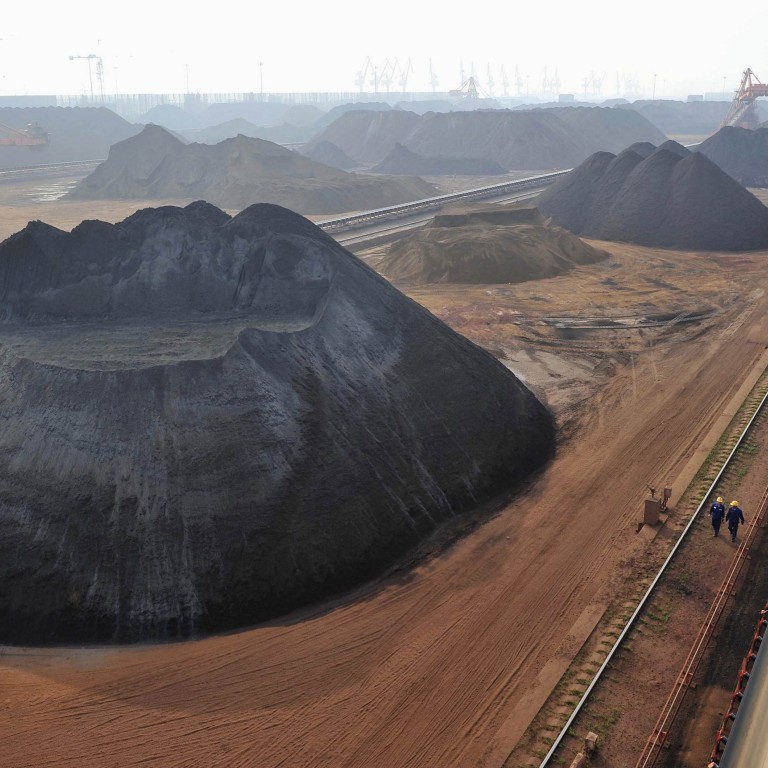
Australian rates, dollar can go lower: central bank
Australia’s top central banker said inflation would be no bar to a cut in interest rates and the local currency could fall further, fuelling expectations of another cut in interest rates next week and driving the Australian dollar to a two-week low.
In a speech titled Economic Policy after the Booms, Reserve Bank of Australia (RBA) Governor Glenn Stevens highlighted challenges ahead as a long boom in mining investment comes to an end.
A slowdown in demand from top commodities consumer China, combined with talk from the US Federal Reserve about scaling back its bond-buying stimulus programme, have weighed on the Australian dollar in the past three months.
“The recent decline in the exchange rate seems to make sense from a macroeconomic perspective,” Stevens told a charity lunch on Tuesday, a week before the RBA next reviews policy. “It would not be a major surprise if a further decline occurred over time.”
The Aussie dollar fell more than half a US cent after his comments, hitting a two-week low of US$0.9085 and taking losses for the day to more than 1.2 per cent.
The currency has fallen around 13 per cent against its US counterpart since April, a windfall to local miners and other exporters, while inflation has been contained.

“We have been saying recently that the inflation outlook may afford some scope to ease policy further if needed to support demand,” Stevens said. “The recent inflation data do not appear to have shifted that assessment.”
Consumer prices data out last week showed underlying inflation ran around 2.4 per cent in the second quarter, well within the RBA’s long-term target band of 2 to 3 per cent.
Those figures had fanned speculation the RBA will cut interest rates another quarter point at its policy meeting on Aug. 6, taking them to a record low of 2.5 per cent.
Markets now put the chance of a cut at 86 per cent.
“The way that he’s talking right now does suggest that there could be a cut on Tuesday and for that reason you will expect the Aussie dollar to continue to slide for the next 24 hours quite heavily,” said Evan Lucas, a market strategist at IG Australia.
Subdued domestic demand, a slowly rising unemployment rate and a benign inflation background all underline the case for further stimulus.
Indeed, a surprisingly weak report on approvals to build new homes earlier on Tuesday only added to the pressure for an easing.
Stevens played down concerns that rising home or asset prices might stand in the way of a cut, saying that low rates were intended to nudge investors toward taking slightly more risk.
“There are clearly signs of policy working in this respect, though not, to date, by so much that we see a serious impediment to further easing, were that to be appropriate from an overall macroeconomic point of view,” he said.
The central bank last cut rates in May, aiming to enliven sectors such as consumer spending and home building. Consumption had been unusually subdued as households chose to boost their savings in the wake of the global financial crisis.
Finding new drivers of growth was crucial as mining investment had peaked after rising strongly for some years.
“That big rise is now over, and a fall is in prospect, with uncertain timing. It could be quite a big fall in due course,” said Stevens, adding that this sea-change was likely to drag on overall economic growth over time.
Partially offsetting that drag would be the increased output from all the mining investment. Shipments of iron ore were already growing by around 15 per cent a year, while exports of liquefied natural gas were set to expand strongly from 2015.
Even if the pace of growth in global demand eased, the level of demand would remain structurally much higher than in the past.
“Let’s be clear that Australians will continue to benefit from the higher level of resources output for a very long time,” said Stevens.

